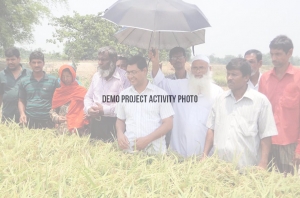E-commerce.
In 2005/6 CCDB went through a rigorous change management process aiming to design an integrated development program that can be more cost effective as well as efficient to ensure faster economic and social development for the grassroots people in a sustainable manner. Subsequently, in 2007, Comprehensive Poverty Reduction Program (CPRP) was designed based on sustainable livelihood approach, and combined service delivery and right based development approaches to address poverty from different directions. Major thematic areas of this program were strengthening people’s organization, livelihood and food security, health & WATSAN, education & culture, societal peace, local level advocacy and gender justice. In the current phase of CPRP started in July 2015, “pro poor market development” has been added to ensure fair price for the products of the poor producers through involving them in the value chain mechanism. CPRP has been working with around 51000 reference people, of them 80% are women. Currently CPRP has been operating through 10 area offices covering 31 sub-districts in Bangladesh.
The goal of CPRP is “deprived and marginalized poor women, men and children further empowered through people centered development process”, and the objectives of this program area i. People’s organizations emerged as a sustainable social force for eradicating poverty and establishing rights, ii. Sustainable livelihood and food security achieved with improved access to market and strengthen capacity of producer group and iii. Living standard of the members of people’s organization improved significantly.
Since 2007, three evaluation studies have been conducted to see whether the CPRP has been able to achieve its objectives. It was found from the evaluation report that the pace of poverty reduction in the CPRP working areas is much faster than that of the non CPRP areas. The poverty head count ratio has been reduced to 20% (2014) from 72% (2007). At the same time 86% of the households have been able to increase their expenditure for health care, food, children education, improved housing, better clothing, etc. It was also found that almost 75% of the people’s organizations have been able to achieve financial sustainability.

